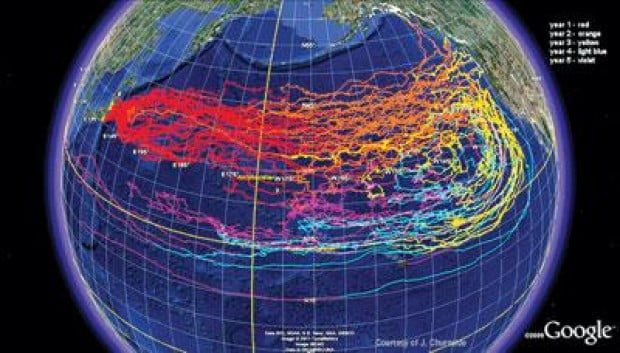
Local scientists say debris from last year’s Japanese tsunami not likely to be much, won’t be radioactive.
By McKenzie Jackson / Special to The Malibu Times
Last Sunday marked the one-year anniversary of the devastating tsunami that struck Japan killing almost 20,000 people, causing radiation leaks at a nuclear reactor and wreaking massive destruction on the island nation. Much of that destruction-cars, boats, houses-was swept into the ocean after the tsunami, causing recent speculation on whether the debris could eventually be carried by wind and currents to the West Coast of the United States.
Sarah Sikich, the Coastal Resources Director of Santa Monica-based environmental group Heal the Bay, said her organization has been getting calls from people wondering whether piles of garbage will soon be hitting local shores.
“[Scientists] believe we could eventually see debris within the next one to three years,” Sikich said.
According to computer models run by the National Oceanic and Atmospheric Administration (NOAA), some debris could reach the Hawaiian Islands as early as the end of 2012, and approach the U.S. mainland by mid-2013.
However, a Japan tsunami fact sheet on the NOAA website cautions that the models are very rough, and can change easily. Winds and ocean currents change constantly and make it difficult to predict an exact date and location for landfall.
Moreover, the exact amount and type of debris-whether appliances, boats or trash-is unknown. The Japanese government has estimated the tsunami and the earthquake that caused it generated 25 million tons of debris in total, but that has not been confirmed.
In the immediate aftermath of the tsunami, it is believed that the heavier pieces of debris sank close to the Japanese shoreline, while objects with buoyancy clumped together into debris fields. Most of those debris fields have dispersed now, according to NOAA, which means that any debris that reaches the California coast is likely to come piece by piece.
Another concern expressed recently is whether any debris that reaches the U.S. could be radioactive, as a result of leaked radiation that occurred when the Fukushima Daiichi nuclear power plant in the north of Japan was damaged by the tsunami.
Most scientists believe it is unlikely that debris will be radioactive, according to NOAA. For one, the tsunami created debris from a large stretch of coastal Japan, not just the north where Fukushima is located. Second, the leak of contaminated water from the Fukushima reactor into the ocean did not begin until several weeks after the tsunami, whereas much of the debris was sucked into the ocean immediately and had begun to drift away.
Finally, seagoing vessels in the area were monitored for radiation and came away with radiation levels lower than the threshold for concern.
Sikich says most of the trash that beachgoers will find on Malibu beaches and surrounding shores in Southern California are mostly from the Los Angeles area.
“During Heal the Bay’s beach clean-ups we find plastic pollution,” she said. “Often times we find Styrofoam, cigarette butts, paper, straws, bottle caps and stuff like that.”
Even if debris from Japan starts hitting Malibu shores at some point in the next three years, Heal the Bay does not predict a major difference in terms of the volume of trash that winds up on Surfrider and Zuma. The organization hopes to use that point to keep the focus trained locally.
“Debris is a problem, an everyday issue we face in Los Angeles and our beaches,” Sikich said. “We hope people use this as an opportunity to realize that.”
